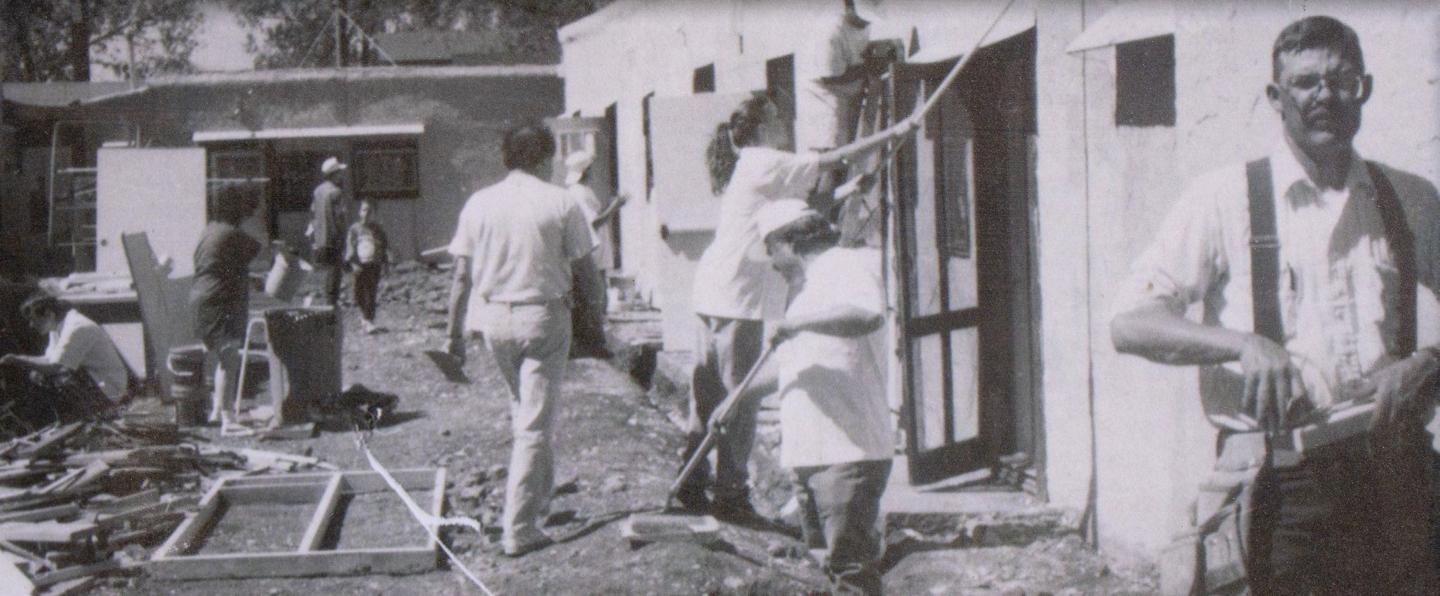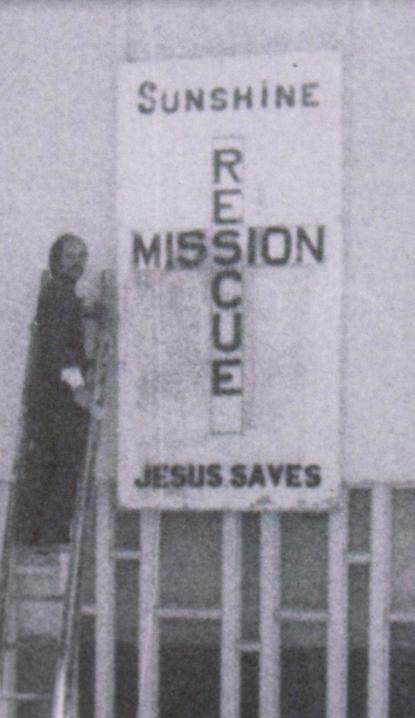
5 minute read
The history of shelters in Flagstaff
With the creation of major interstate highways and the continuous development of the city, Flagstaff’s population has increased from 7,600 to more than 76,000 since the 1950s. This population increase has contributed to a growing number of individuals experiencing homelessness in the city.
In 1957, Flagstaff church members, businessmen and individuals came together to create a soup kitchen to meet the needs of community members without homes. Over the course of 66 years, the soup kitchen turned into four shelter and service facilities in Flagstaff known as Sunshine Rescue Mission Inc. (SRM), and two other shelter organizations have been established in the city.

SRM initially operated in what is now Southside Tavern in downtown Flagstaff. It is a faith-based organization that started by providing free meals, overnight shelter and clothing for people without homes.

Within its first month of establishment, the organization served 1,200 meals, provided 200 people with overnight shelter and gave out 34 pieces of clothing. Now, SRM serves over 60,000 meals, shelters more than 35,000 people and provides over 6,000 pieces of clothing annually. Its services have expanded to offer healing and recovery programs and job opportunities for individuals seeking support.
The organization was originally managed by a board of local business owners and relied entirely on community support with some surplus food contributions from the federal government.
Kathie Knapp is the current executive director of the nonprofit organization and said SRM still leans on the community for donations.
“We have donors that believe in life and people being restored and the creativity and dignity of the human heart and soul,” Knapp said. “And if it wasn’t for those people, literally thousands of people, this place wouldn’t exist.”
Five years after opening, the organization moved its location across South San Francisco Street to open its first official shelter — The Mission. The Mission originally housed both men and women until the organization opened a second facility for women only 33 years later.
In the 1960s, Flagstaff underwent major road and tourist traffic changes with the construction of Interstate 17, connecting the town to Phoenix and Interstate 40, providing a connecting route between California and North Carolina. These interstate highways brought an influx of people to Flagstaff.
Knapp said she estimates half the people the organization helps come from Arizona, and less than one-third are from Flagstaff. She said SRM has sheltered people from as far away as Hawaii and Florida who came to Flagstaff specifically for shelter and safety.
“We get people coming here from all over the United States,” Knapp said. “It shocks me.”
Knapp said The Mission sheltered a man who travelled from California to Flagstaff seeking a faith-based shelter. She said he did not know about SRM, but a stranger outside a crowded shelter in Los Angeles told him he needed to go to the mountains in Flagstaff. A police officer later found the man hiking in the desert and took him to the Arizona state line, where he hitchhiked his way to the corner of The Mission.
As more individuals came to Flagstaff for shelter, outreach organizations continued expansions to meet increasing needs.
In 1995, SRM opened Hope Cottage, a shelter for unhoused women and children. It was the first shelter in Flagstaff solely for women and children, and it could shelter up to three mothers with their children and eight women. Now, the shelter has nine rooms for families, 20 beds and a long-term program for women interested in pursuing faith and job programs.
Sharon Wilcox is the director of Hope Cottage and said the goal of the shelter is to transform lives through community and mentoring.
“Community is where healing happens,” Wilcox said. “I believe it is a very basic need to know someone and to be known.”
Along with Hope Cottage, SRM has opened two other facilities. In 2019, Thrift for Goodness Sake! opened as a nonprofit thrift store that provides jobs for people in need, and in 2021, Sanctuary House SRM opened a long-term healing center for men.
Catholic Charities Community Services, a faithbased organization, joined the Flagstaff shelter scene in 1972. The organization had been operating in Phoenix since 1933 providing programs for youth development. Its Flagstaff office has a shelter for families, a housing program and an outreach program to find unsheltered individuals in the city and provide them with emergency housing.
In 2006, Flagstaff gained a third shelter.
Flagstaff Shelter Services (FSS) started as a seasonal emergency shelter with about 12 staff members. In 2014, Ross Schaefer became executive director of the organization and moved the shelter to a year-round service provider. One year after it opened full-time, FSS launched its Housing First program, which pairs people with case managers who help them obtain permanent housing.
“The true backbone of our organization is that, at the end of the day, housing is the answer to homelessness,” Schaefer said. “So, that’s where we try to spend a lot of our time and resources in solving this crisis for people, and it’s kind of who we are.”
They have 65 staff members who provide services to 2,000 individuals and find housing for 300 clients annually. The organization reported that 86% of its clients who attain permanent housing do not return to homelessness.
FSS opened a new shelter last year in a former Howard Johnson hotel. The shelter was named The Crown and has 58 emergency shelter rooms available for the elderly, immunocompromised individuals and families. Schaefer said the organization is currently working on purchasing another hotel to renovate into a shelter called The Lantern, which will focus its resources on people without children.
Schaefer said her organization has seen an influx of people seeking services throughout recent years, but the number of unsheltered people remains constant.
“In our community, [unsheltered numbers] seem to be steady or have a decrease,” Schaefer said. “The good news in that regard is people are connecting to services, at least from a shelter perspective.”
However, Schaefer said the acquisition of shelter services does not reflect the number of people securing housing.
FSS continues to prioritize the Housing First initiative, Schaefer said. They pair clients with housing case managers, work with a network of community landlords and provide clients with resources in employment, public benefits, physical and behavioral health care and other agency services.
All three organizations partner together and with other services in Flagstaff to create the Front Door — a program that serves as an entry point to connect people without shelter to services around Flagstaff. The Front Door program offers an assessment to match individuals with services that best fits their needs.
“We love that there are other agencies here, and we don’t try to reinvent the wheel,” Wilcox said.
The expansion of shelters has helped programs find their niche, allowing them to better assist the diverse homeless population. While each shelter organization in Flagstaff has a different focus, they all hold one common goal of supporting individuals experiencing homelessness.
Knapp said she believes people without shelter are the most misunderstood demographic in the U.S. She said it is important to make them feel seen and continue to offer services to help them find safety and healing.
“Some of the finest people I’ve ever met, I’ve met on the sidewalk,” Knapp said. “They are bright and they’re funny and they’re intelligent and they’re talented.”










